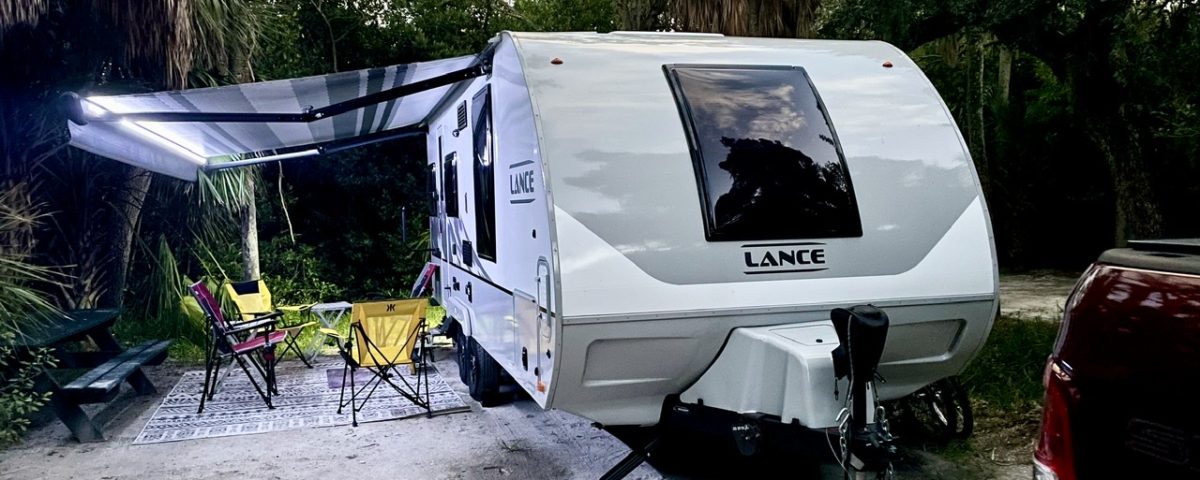Zamp Connector Needed
Our first camper, a T@G MAX, had a Zamp Solar connector. Because of this, we purchased a Zamp Solar Suitcase. We liked using it and expected our new camper to be wired for Zamp as well. However, our nüCamp T@B 400 is not wired for Zamp.
So, this became our first official modification on the 400. I wanted to use the solar suitcase, but was concerned about drilling a hole into our new camper. My husband convinced me that he could do it without creating any issues. He did a fantastic job and it works great! I am sharing his step-by-step instructions for any of you who might also want a Zamp connector.
Items Used


- Zamp Connector with wire. We purchased the connector and 10’ of the wire for $23. You can get the connector cheaper with a very short wire, but we did not want to splice to add needed wire.
- Painter’s Tape
- A drill.
- Drill bit for screws 1/8” Jobber Drill Bit.
- Drill bit 1/4” for pilot hole.
- Paddle bits: 7/8”, & 11/16”.
- 4 Phillips Head screws, #8 x 3”, type A point.
- 2 each 3/8” Lugs, 12 gauge.
- Silicone, clear.
The Hole
To begin, he put painter’s tape on the drill spot to protect the finish and to mark it.

The hole in our new 400 was really three holes. Firstly, he drilled a 1/4” pilot hole approximately 3/8” deep to start the hole. Secondly, he drilled a 7/8” hole that was 1/8” deep. It is for the lip of the flange. Lastly, he drilled an 11/16” hole all the way through the camper wall. This is to accommodate the bulk of the connector.

Attaching the Zamp Port
The Zamp connector fits perfectly into the hole and the four screws attach it securely to the wall of the camper. My husband marked the spot before drilling, drilled the holes, and tightened the screws. Next, he applied silicone around the connector to seal the area from water.

The above wire extends to a heavy duty distribution stud that can be accessed under the bed.
Connecting to the Batteries
Next, he connected the wire to the batteries. We have two six-volt AGM batteries and the Zamp connector can access them via a heavy duty distribution stud that came installed in the camper. You may be connecting to a single battery and not using the distribution studs.


Also, my husband cut approximately 4 feet of surplus wire. He then crimped and soldered the black and red wires. He also added shrink tube to the ends.
We were a little concerned about how to attach the wire to the battery posts because of everything we have heard about reverse polarity and the Zamp. So we contacted Zamp and they explained to us that the positive wire would be coming from the male lead on the port. For our cable, it was red, so we basically just attached the red cable to the positive post and the black to the negative post.
We asked the Zamp technician what would happen if we connected it wrong. He said that it would just show an error on the charge controller. That made us feel better.
Conclusion
Finally, we gave it a trial run in our driveway and it worked beautifully. So, we now have a Zamp port on our new camper just like we had on our first camper. My husband also ordered a Zamp decal. I would have been good without the decal, but love the port.
Our page, Camping Resources for New Teardrop Campers , has other posts related to how we solve our camping needs as new campers. So, you might want to check it out.
We can’t wait to take our camper with its new Zamp port on the road!


